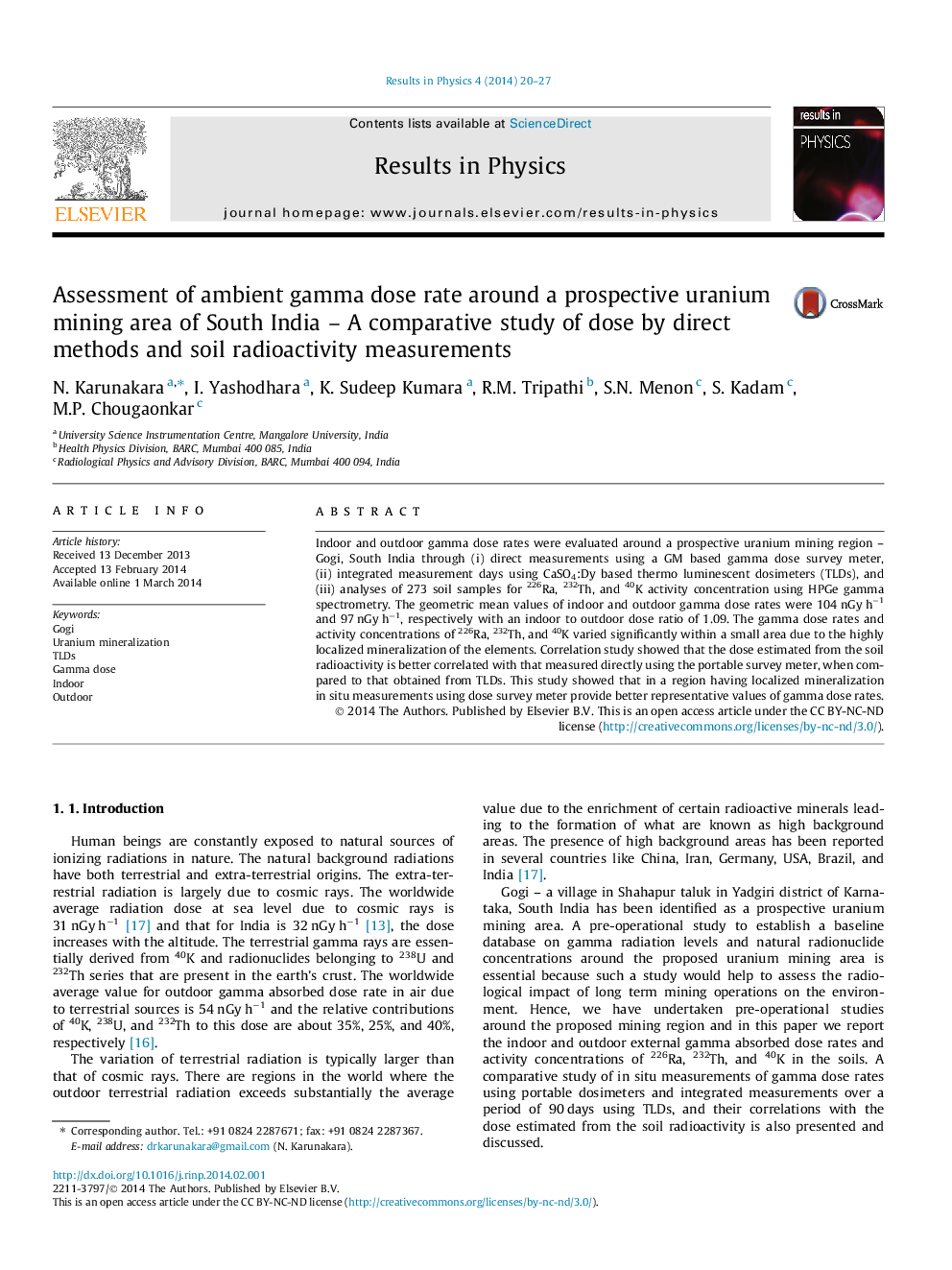| Article ID | Journal | Published Year | Pages | File Type |
|---|---|---|---|---|
| 1878480 | Results in Physics | 2014 | 8 Pages |
•Gamma dose rate was measured around a region indentified as prospective uranium mining area.•Dose was evaluated by GM based survey meter, TLDs, and analyses of soil samples for radionuclides.•Dose evaluated from radionuclide activities is an underestimation when compared to in situ measurement.•In situ measurement of dose by survey meter accounts for non-uniform distribution of radionuclides.
Indoor and outdoor gamma dose rates were evaluated around a prospective uranium mining region – Gogi, South India through (i) direct measurements using a GM based gamma dose survey meter, (ii) integrated measurement days using CaSO4:Dy based thermo luminescent dosimeters (TLDs), and (iii) analyses of 273 soil samples for 226Ra, 232Th, and 40K activity concentration using HPGe gamma spectrometry. The geometric mean values of indoor and outdoor gamma dose rates were 104 nGy h−1 and 97 nGy h−1, respectively with an indoor to outdoor dose ratio of 1.09. The gamma dose rates and activity concentrations of 226Ra, 232Th, and 40K varied significantly within a small area due to the highly localized mineralization of the elements. Correlation study showed that the dose estimated from the soil radioactivity is better correlated with that measured directly using the portable survey meter, when compared to that obtained from TLDs. This study showed that in a region having localized mineralization in situ measurements using dose survey meter provide better representative values of gamma dose rates.
